DAY 15 - MOTHER'S DAY & A VISIT TO SELSO KIRKE AND SLOT.... Sunday 8th May, 2022
Mother's Day today... I always find this a hard day, having lost my own Mum 10 years ago... I particularly find it hard when I am around the kids and Steve as it seems everyone else has a Mother to visit Happy Mother's Day too and it is this that hits me hard as I can't just ring my Mum and let her know how much I love her and how incredibly blessed I was to have her as my Mum, She was a very special woman and I am so thankful that not only was she my dearest Mum but also a wonderful friend.
There was no breakfast in bed for me this morning but I was woken by our beautiful grandsons, and the boys presented me with these flowers that they picked from the garden... So precious.
 |
| Flower from Elliot to wish me a Happy Mother's Day. |
 |
| Flower from Theo wishing me a Happy Mother's Day. |
Pete hadn't had time to take the boy shopping for Mother's Day as the last two weeks had been really crazy with the move from Copenhagen, moving into the new house, starting the boys at a new Day care and visitors, so both he and Steve took off early to visit Silvan's (Danish equivalent to Bunnings) to buy a Cherry Tree for Maria for Mother's Day. He also had a few other things to buy to finish a few do it yourself projects at home.
Meanwhile whilst the boys were off shopping, I did a load of washing, whilst Maria pottered in the garden. The boys love to help, especially Elliot. He would happily wander around all day with hi little watering can watering the pot plants.
 |
| He loves to help water the garden.. |
When it came time for me to hang out the washing, he was very keen to help hand me the pegs, until I pegged a couple of his pegs to his coat and then it became a big game and he wanted me to peg more clothes pegs on him...
 |
| He also loved having the pegs put on him... |
 |
| Two helpful little boy |
Once the boys got back, Maria headed into Copenhagen to pick up her Dad who was joining us for lunch and coming out to check out their new house. It was really lovely to catch up with her Dad again and we all had a lovely lunch together.
After lunch, Pete and Maria, her Dad and the boys decided to go for a walk down to the beach, meanwhile we decided to take a drive out into the countryside for a bit of an explore.
 |
| The Danish people are proud of their flag and happily display it. |
 |
| Cherry tree out in bloom |
We had been for a drive to Skibby a little village not far from Pete and Maria's not long after we had arrived in Denmark, and Pete had told us about Selso Slot, a Manor House that was situated not far from Skibby so we decided to take a little drive out and check it out this afternoon.
Again we enjoyed the beautiful drive through the country which took us a different route to the one previously traveled.
Again we passed fields and fields of flowering canola... like I have said before I don't think I would ever tire of seeing the contrast of the beautiful green and golden yellow field.
 |
| Lovely country driving |
 |
| I would never tire of see these magnificent fields of yellow. |
As we were driving along we spotted a field with a huge flock of geese... there were just so many of them that we had to stop and photograph them...
 |
| The vibrant colours of Denmark |
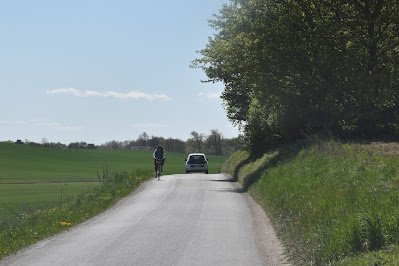 |
| Nothing like a Sunday afternoon drive on a country road.. |
Our plan was to visit Selso Slot but along the way we discovered the beautiful Selso Kirke which is situated on a hillide by Selso lake, which is the rest of a corner of Roskilde fjord.
 |
| Selso Kirke overlookint Selso Lake |
 |
| Selso Lake |
 |
| The birdlife and wildflowers were prolific |
Selsø Kirke dates back to around 1100.
It was originally constructed as a round church also serving defence purposes.
 |
| Selso Kirke has real history.. |
Selsø church was built as a round church around
1150AD, but was rebuilt in about 1250AD where only the apse was left from the old
church. The porch is build in 1400AD and the tower from was around 1500AD.
The church has a beautiful position on a
hillside by Selsø lake, which is the rest of a corner of Roskilde fjord. Here
was the island Selsø which in the early Middle Ages belonged to the church in
Roskilde, and Selsø church was supposedly built as a round fortificated castle
church during the troubled period in the 1130s and the 1140s in which the
bishops and other important clerical people supported the alternate pretenders.
 |
| Beautiful manicured lawns, gardens and cemetery |
A lot of the Kirkes (churches) in Denmark have cemeteries attached to the church, and each plot has it's own little gardens. The think is the families tend to these little gardens and the ones at the church here were just gorgeous, so neat and tidy and full of beautifully flowering spring flowers..
 |
| Their headstone are often quite interesting also and very different to what we have at home.. |
 |
| Stunning Tulips |
Interestingly it wasn't until 2015 that the original date of the Church was know. Apparently it was then that a gas problem occurred and they had to take up the church floor and this was when they discovered there was an original and round church floor from the 1100's. This makes Selso Kirke one of the oldest churches in Denmark, although, no one seems to know why this location would make it so..
The gas problem was discovered in July 1987 when the church was cleared of beetles. Ten days later a funeral was to be held in the church and it was then that the parish priest, the church servant, the church. Although the Danish Environment Protection Agency has not been able to detect concentrations above the limit values, many became ill after staying in the building. In 1996, the Danish Environmental Protection Agency therefore ordered that one should only step inside the church wearing necessary protective equipment with fresh air supplies from the outside.
The closure forced the church into very thorough renovation and cleaning: All furniture was removed. The walls were completely cleaned off and soil was removed under the entire floor at a depth of half a meter. It is believed that the gas was so heavy that it settled here. The old benches were discarded and replaced with new ones. All other furniture such as the pulpit and alter were thoroughly cleaned. In addition, a special ventilation system has now been established at the request of the environmental authorities, so that the air just above the floor is replaced. The renovation meant that two unknown frescoes were found .
 |
| Beautiful views |
We even found a "Karen" tombstone. No other information on it, just "Karen". Steve wanted to photograph it..
The Church parking lot is now the parking for Selso Slot and the trail to the castle begins here. There were many folk walking the trail but we decided to drive our car down and park closer to the actual Slot itself.
 |
| This path leads to the Selso Kirke... |
We found some parking closer to the manor which was great for me with my sore knees and parked there, it was only later that we found out that, that particular area was reserved for buses and people with disabilities. I did fit into that category that day but didn't have any official paperwork to say I had sore knees and a sore back though,
After taking a few photos of the parkland and the walk up to the Kirke we proceeded to head towards the Slot. Obviously in a bygone era there was a moat around this slot as even though now it was all dried up there was still evidence of where one had been.
Seen
from a distance, the baroque manor Selsø by Skibby seems elegant but completely
without crumbs. It is a very
traditional example of a Danish Castle - plain, simple, purposeful with a
history going back to 1100s although it's current structure dates to
the renaissance in 1576. It is a rectangular, symmetrical red monkstone building with 13
bay windows on each of the two floors. A wide staircase leads up to the front
door. At the top is a high and simple saddle roof with red so-called wing
bricks. Bricks were 5
times more expensive to use than any other material back in the 16th century
so some brick was borrowed from other manors or estates, giving Selso a
unique look. Also making it unique in Denmark was its (now
non-existent) moat, which was created by water access to Selso Lake. The manor is located in a scenic area close to lake, forest and fjord.
You arrive in an adventurous way via an avenue, over a moat and through a
lattice gate to the castle square itself.
Selsø
was originally located on an islet in a lake with a river connection to
Roskilde Fjord, and here before the current building was a small medieval
castle from approx. 13th century. In the courtyard, the large stone well can
still be seen from there. The current main building
dates from 1576 but was renovated in the Baroque style in 1734. The estate has been owned by the
Scheel-Plessen family since 1721 but the recently restored main building and
its immediate surroundings have been ceded to a self-owning foundation. The
building is now operated as a museum and is also used as a venue for concerts
and other events.
Selso has a long and colourful history being first mentioned in 1288 when bishop Ingvar of Roskilde granted it to Jens Grand for life. On Grand's death in 1300, Selsø reverted to the Bihopric of Roskilde. The original Selsø was probably a defensive building located close to Selso Church, overlooking the lake which was then part of Rokilde Fjord.
Selsø was together with other property of the Catholic Church confiscated by the Crown during the Reformation. In 1756, Christian III ceded the estate to Andreas Von Barby, one of his favourites, who had already been granted a number of fiefs. Barby was the following year granted royal permission to turn the estate into a manor house for his nephew Hans von Barby. Hans von Barby had no interest in the Danish estate and sold it when his uncle died two years later.
The new owner of the estate was Corfitz Knudsen Ulfeldt. He was already the owner of Ulfeldtholm at Nyborg on the island of Funen and had also been granted a number of royal fiefs. He was now also granted Eskildso in Roskilde Fjord, initially as a fief but after a while as his property in exchange for other land.
In 1562, Ulfeldt was sent by the king on a diplomatic mission to Stockholm. He fell seriously ill on the way home, and died at Hillerodsholm in 1563. He had never married, and Selsø and his other estates were therefore passed to his brother Jacob Ulfeldt. The Selsø estate comprised 50 farms, six village houses without land, a windmill and a watermill.
Jacob Ulfeldt completed a new main building in 1576, using half a million bricks from the abandoned St. Clare'sPriory in Roskilde. The new building was apparently designed by a Dutch architect.
After Jacob Ulfeldt's death, Selsø was handed down to his son Mogens Ulfeldt. He was appointed as Admiral of the Realm in 1610. An action committed by his wife, Anne Munk, prompted him with the king's permission to imprison her at Selsø and her full freedom was not restored until 1624.
On Mogens Ulfeldt's death in 1616, Selsø was handed down to their four children.
In 1624, King Christian IV wrote to the three Ulfeldt brothers, encouraging them to travel abroad. In order to cover travel expenses, they had to sell Selsø.
The buyer was Ernst Normand, Christian IV's former servant, who had already acquired the estate Palsgård in Jutland through his marriage to Ingeborg Arenfeldt. On his widow's death, Pelsgaard was passed down to their daughter while Selsø was sold to Joachim Frederik Pentz.
in 1669, Selsø was ceded by Pentz to Erik Krag in exchange for Åstrup in Jutland. He was a major landowner, but lost most of his fortune though speculation.
In 1682, Selsø was acquired by the enterprising noble lady Berte Skeel. She was also the owner of a town mansion on Kongens Nytorv in Copenhagen. She administrated the estate with great skill for the next almost four decades.
In 1821, Selsø was purchased by Christian Ludvig Scheel von Plessen (1702–1752), one of the country's most prosperous landowners. From 1728 to 1734, the Renaissance manor was adapted to the Baroque style and has not been substantially altered since. In 1728, Plessen also purchased the nearby manor of Lindholm. By testament, Plessen created a Fideikommis from the estate with the effect that it could neither be sold or divided between heirs. After Christian Ludvig Scheel von Plessen's death in 1752, Selsø and Lindholm were handed down to his grandson Christian Ludvig Scheel-Plessen.
In 1829, the last occupant of the property, Agathe von Qualen, Christian Ludvig Scheel von Plessen's widow, died. As her heirs were not interested in the estate, the manor's furniture was auctioned off, the key turned and the castle wa left hidden and forgotten for 144 years.
The building soon fell into a sorry state as uninvited visitors plundered its remaining assets. Even the magnificent reception hall was used as storage space for corn, dog kennel, drying laundry and much more. It miraculously aved the castle and salvation finally came in 1972 when the writers Grethe and Bernhard Linder initiated the manor's restoration. The restoration work was successfully conducted over the following 25 years, earning them wide recognition including the Europa Nostra award. Today it can be visited as a manor museum which is what we are doing today.
There didn't seem to be any place that appeared to be an entrance where you could pay to visit so we just wandered in like we saw other's doing.
We accidently wandered into the kitchen first which was situated on the ground level. The kitchen was in it's orginal state. The kitchen is a well preserved 18th century kitchen. There is still the open fireplace where large dinners for the lords and simple die for the manor's worker were prepared.
 |
| Checking out the rotisserie and the pulley sytem of operating it.. |
Steve was very impressed with the fireplace and large spit which works again and we did hear from one of the tourist guide that on special occassions the cook stands by the blazing fire and tell about cooking from that time. We were not in luck to hear that today.
 |
| This rock was the counter weight for the rostisserie |
There was no electricity, heat or running water in the castle and the tools you see in the photos of the kitchen were all original to Selso. The windows in the kitchen had the same thought process as those above the stairs to keep thing cool and allow for breezes. Apparently it is the oldest functioning kitchen in Denmark.
We were amazed at how lovely the kitchen was set up with lovely fresh flowers on the table and we later realized as we saw caterers carrying cakes across the courtyard that there was actually a function on and afternoon tea wa being served in there. Good thing we looked through it when we did, otherwie we might have missed seeing this and it was one of the highlights of our visit here..We continued our wander through the ground level of the slot and found rooms full of lots of interesting tools used back in the early years of the slot. A lot of these were used for working with wood which really interested Steve. They even had some wooden wheels down there. |
| Lots of interesting tools used for working with wood. |
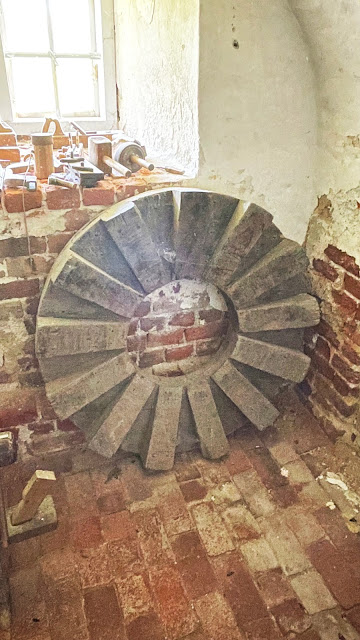 |
| Wooden wheel |
 |
| More wooden wheels |
One of the other rooms we went into had all sorts of presses. there were old farm tools, sleds, billy carts, clogs, all manner of very interesting things and we probably spent a good hour just checking them all out. We could have spent longer but didn't want to miss out on seeing the main part of the castle also...
 |
| Old wppden toys |
 |
| checking out the workings of this olden day bike.. |
 |
| Wooden snow shovel |
 |
| Winter sleigh |
 |
| Wooden shovel |
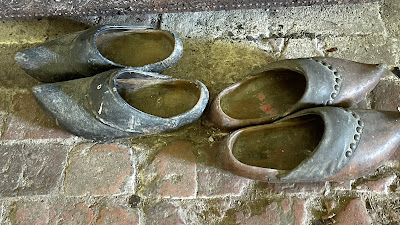 |
| Wooden clogs |
Time to head into the main part of the manor. The views from the steps to Selso Slot were quite impressive as you looked down onto the courtyard and then up through the avenue of trees to the walk to the Selso Kirke. It was from the stairs here that we realized that there was an afternoon tea being served in the Kitchen below as we saw several caterers carrying cakes and other wonderful goodies from the cafe to the kitcehn.
 |
| There is even a cafe on site where you can enjoy a cuppa after your visit to the Slot |
 |
| The view from the stairs. |
 |
| The view from the stairs. |
 |
| Afternoon tea goodness being taken across to the original kitchen... |
The inside design of Selso Slot, including all the French wallpapers, dates back to 1735 when it was rebuilt to fit the Baroque style. It is remarkable that it can still be seen and that it has survived all the uninhabited, damp years.
It was almost always lived in by the German Scheel-Plessen Barons and fully used part-time as a (family) castle until 1829. Whilst no one lived in the castle after this date, it was still owned by the Von Pleen family and the last of the Barons, although he was kind and fair, he rarely visited the castle. The grounds of Selso though still had people living and working there until 1950 when the last Baron von Plesen died.
Back in the 1950's the idea of preservation wasn't something people thought about and since the owners didn't live on the property, the castle was never upgraded and left the way it was in 1829. Between 1950 and 1972 it really became rundown as there was no longer anyone working the land and squatters moved into the property housing (not the castle), and thieves stole doorknobs and marble from the inside. It was not until it was privately bought in 1972 that restoration work began on the castle and it was a further 30 years before it was opened as a museum.
Today whilst the French Wallpapers and marble are from the original redorating of the castle, very little of the furtniture is originally from Selso, and most in there today, although from that particular era in time has been loaned to the castle.
 |
| One of the original pieces of furniture from Selso Slot |
We were quite impressed with the first room we saw, impressed that it was as in tact as it was considering that it had spent over 100 years neglected and the room had been used as storage for grain as well as other things. The rooms weren't overly flash, but then it did give us an inkling into the furniture style for that era of time...
The pink and white marble was quite unique, something that we had not seen before in any of the palaces and castles we have been through.From the drawing room we moved on to a study. There was a tour group ahead of us with the tour guide speaking English so we were able to listen in on some of her stories. They were obviously on a time frame as they were moving pretty quickly throug the building. That is the beauty of having time on your side, you can view it all a bit more leisurely and time it all in...
As we left the study, Steve noticed a ladder that went up into a loft area so decided to climb up there and see what he could find. It turned out to be a maid's bed quarters and was furnished just how it would have been back when this manner had servants. |
| Maid's quarters... |
Furniture built in the 17th and 18th Century was beautiful handcrafted. The detail, and carvings were quite exquisite. There were also some beautiful candeliers throughout the manor.
 |
| Beautiful crystal chandeliers. |
 |
| Beautifully handcrafted furniture.. |
We continued to make our way through the first level of the manor and were just really impressed with the beautiful furniture. Steve having worked with wood in his work before he retired could really appreciate the craftmanship as well as the beauty of the timber. Furniture back then was an artform and was reflected the status of the occupants of the castles and manors at the time. It was greatly influenced by the style and era of art at that point in history.
The next room we visited was the Drawing Room. The Baroque wall panelling and the door dates back to 1731. The shutters and the double doors are from 1803. The room was repainted in 1973 as the coats of paint were in a very poor state. At the same time the wallpaper was recontructed to the original Spanish green. In the corner of the room and above one of the doors parts of the original wallpaper is still visible. The ceiling in this room was restored in 1972.
From here we headed up to the top floor. At the entrance to the stairs upstairs, there was a wonderful display of different weapons that Steve found quite interesting. We just wished that they had a little more information about it.
In old descriptions of the house, this room was named "the hall upstairs" . This room was restored in 1975-1976. The ceiling was restored and a new window facing south was put in. This was done based on findings showing traces of a original now walled up window. The Baroque panels are from 1732 but painted grey about 1803.
 |
| Securing the ceiling before restoration.. |
The next room we checked our was "The White Lady's Room". This room has a reputation of being haunted. It seems that every castle has a ghost story and this one isn't any different. The story goes that Elizabeth von Thienen, wife to Baron Morens Scheel von Plessenalson who in 1749, jealous of all of his affairs that he had when he was at their other home in Copenhagen, she stabbed him in his sleep in this room, three his body out the window into the moat, and then killed herelf by jumping out the same window. She became kown as The White Lady.
Although the story of The White Lady is pretty well known and accepted, it has been pretty hard to verify other than it wa fact that the Baron was a wonanizer and "died suddenly". There have been conflicting reports of him dying at Selso or Copenhagen but it is pretty well documented that Elisabeth lived until 1788. Who would know, part of the story could be true, but it added to the mystery and history of this Slot.
The actual rooms in the manor where huge and I am sure in the real manor there was probably a lot more furniture in each room. At the other end of the floor, we came across another bedroom with quite a fancy bed with a canopy.
 |
| Now this is one fancy bed. |
On the top floor there was also a scaled model of what Selso Slot looked like when it wa originally built, we did find this really interesting as the towers are no longer and the buildings look a little different now...
One of the things that stands out at Selso Slot is the windows. These windows all have a purpose. Selso was built at a specific angle with all the window to allow for amazing cross-breezes to keep the home cool. It is why, after hundreds of years, when you walk inside there are no muty or old smells The windows not only offer amazing views of the countryside but they also keep everything fresh inside by their perfect shape and placement.
 |
| These windows allow amazing cross breezes to keep the house cool |
 |
| Views from the windows are amazing. |
 |
| Views from upstairs windows. |
Another one of the rooms that we found really interesting, had the walls adorned with photos of other all the castles, kirkes and manor houses in Denmark. We spent quite a bit of time, checking them out and looking for the one we had already visited or we had on our list of places to visit. There were many we had never heard of and a lot probably no longer exist, but it really bought home to us just how old Denmark really is and just how rich a history this country has...
There were one final set of stairs to climb, and they looked pretty steep. I decided to wait on the second level whilst Steve climbed the them to check out the Loft. The roof structure was more of interest to him rather than me. Selso's roofing is constructed as a system of king posts and queen posts joined by girders and purlins supporting the principal rafters and main couples, which in turn rest on the massive oak beams on the wall plate. As not all the supporting partition walls are placed centrally, the beams have different spands, up to 7 metres The main rafters are joined by girders, placed in the centre of the construction supported by a single vertical beam, a "king post". The airm of the construction is to transfer all weight to the wall plate. In all likelihood the loft was used for storage, when the building was lived in. Perhaps minor rooms were also built in, erving as sleeping quarters for the staff.
 |
| The Loft |
 |
| Meanwhile I waited on the stairs for Steve to come back down... |
By the time we finished checking out the Slot there were quite a few people enjoying afternoon tea out in the courtyard. I am sure that Mother's Day probably had something to do with it, as this made for a lovely outing to treat the special Mum in your life.
 |
| Lots of folk out enjoying the Spring weather.. |
We decided to also indulge and order a hot chocolate to have for afternoon tea, and whilst Steve went off to order them, I proceded to head for the information building out at the start of the walk to the Kirke. There were some picnic tables there and I thought it would be a lovely location for us to enjoy our drinks. The wildflowers were quite prolific around there and I wanted to enjoy not only the beautiful day, but the beautiful natural setting as well.
Whilst Steve ordered our drinks, I enjoyed checking out the wildflowers and photographing them.
 |
| Lovely Spring Wildflowers at Selso. |
There was a real story to our afternoon tea. Steve went and ordered it and when it came time to pay for it, he discovered that you must have cash or use the special online Danish pay card, neither of which he had. It was slightly embarassing, and in the end the lady at the cafe shouted him it on one condition that he say a prayer for her that evening. We did feel terribly embarassed and had we have thought about it, we could probably have run Pete and Maria and got them to pay over the phone. They paid us out big time when we shared the story with them when we got home...
 |
| Our freebie afternoon tea... |
It was going on for 5pm by the time we had finished our afternoon tea and we knew that Pete and Maria liked to have dinner somewhere between 6 and 6.30pm so we figured it was time to head back to the car. Fortunately Selso Slot is probably only 15-20 minutes from home, but we decided to find a different route home. There are just so many roads over here to lead to the same destination.
Our trip home took us along side Selso Lake and was again a very picturesque drive. There were a few people coming back in off the lake in their canoes, and we did think that we would love to come back and explore it a little more. There were picnic tables here also.
That is one thing we have noticed over here, there are picnic tables everywhere along the sides of the roads and besides the lakes and water ways. The Danish population love to get out into the great outdoors especially in Summer.
It's been a different Mother's Day this year, but a good one. Our trip out to visit the Selso Slot was good, we food so many gems along the way. It is different to a lot of the other places we have visited, but the history of this Slot was really interesting and I would definitely recommend a visit.
We have more adventures ahead of us tomorrow. Maria starts work tomorrow so we will be delivering the boys to daycare and picking them up again in the afternoon.
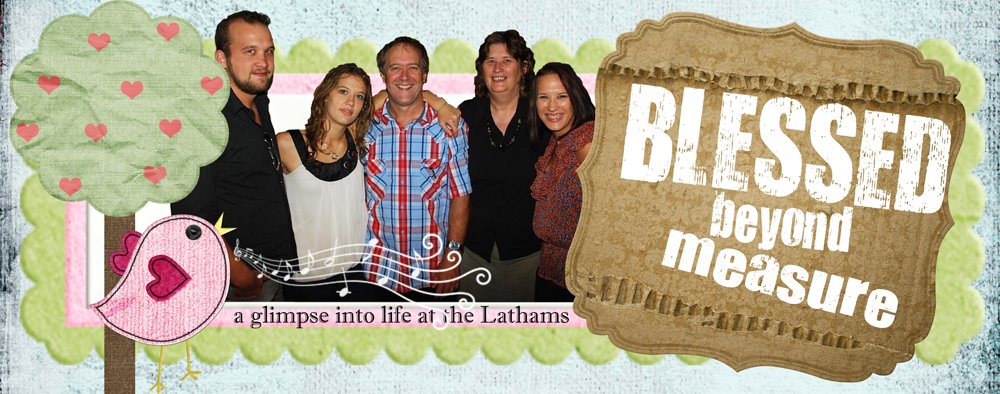

























































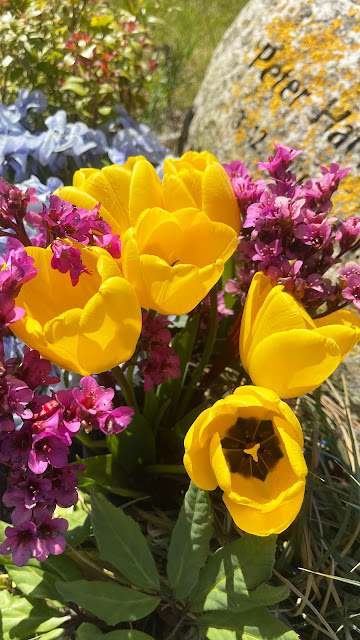





































































































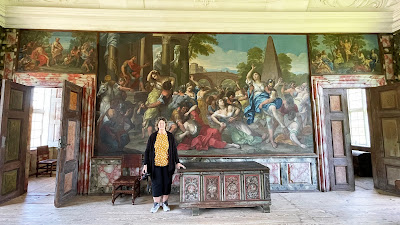







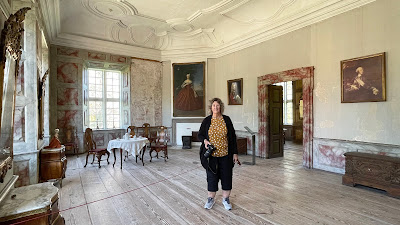

















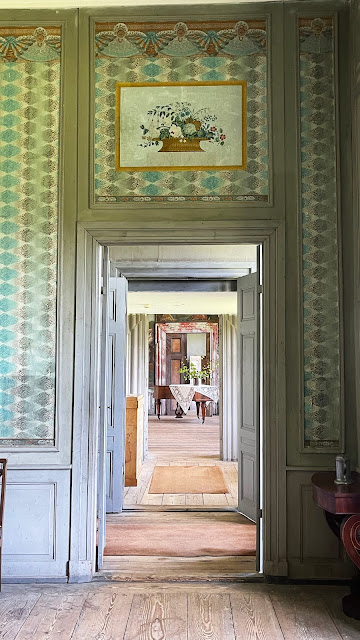


































































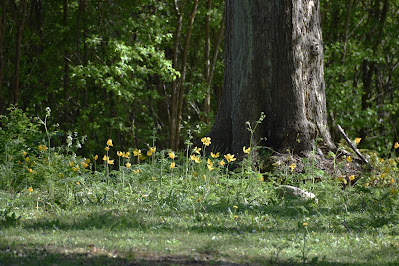

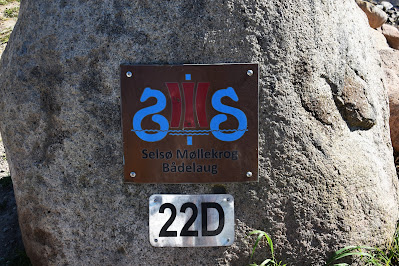






0 comments:
Post a Comment